June 2, 2016
Sami Ramly @ Stanford Club Ushering in the Next Generation of VR
This Stanford Club is Ushering in the Next Generation of VR.
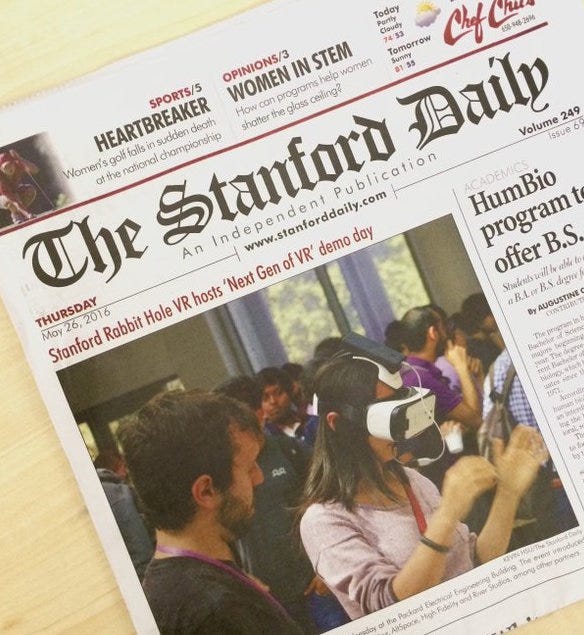
Over the last 12 months Rabbit Hole has been building up quite a presence for VR at Stanford. They’ve hosted a weekly speaker series and have a dedicated space with hardware for members to work on projects. On top of that they provide mentorship, connections to industry, job opportunities and workshops that bring multidisciplinary people together to explore new projects & experiment. Last week I had the chance to participate in their first ever demo day event, appropriately titled “The Next Generation of VR.”
The Next Generation of VR
The gathering was held in Packard Electrical Engineering building on campus and successfully mixed Silicon Valley elite with the amazing talent pool of developers, engineers, makers, designers and entrepreneurs that live, breathe, and bleed Cardinal Red. Venture-backed VR companies Jaunt, High Fidelity, AltspaceVR and Wevr demoed side-by-side with industry giants likeMozilla and NVIDIA; all also supporting as sponsors of the afternoon’s festivities. They weren’t the only ones showing love for the student ran Rabbit Hole VR — in total sixteen sponsors stepped up in support of the club’s mission to increase exposure, awareness and involvement in VR at Stanford. Overall, the event was the biggest VR expo that Stanford has ever seen. It’s clear that there’s a huge demand from the community on campus to learn more and get involved.
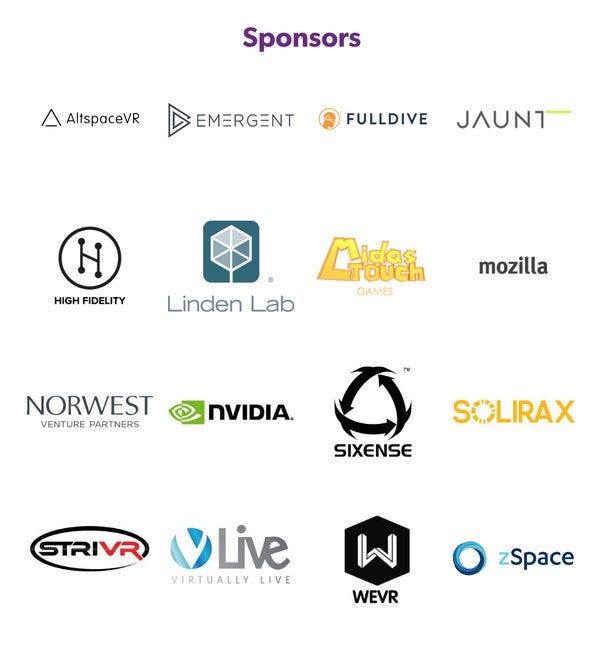
“I was overwhelmed by interest from attendees and sponsors leading up to the event — we were oversubscribed in one day with RSVPs from students, faculty, industry members, and enthusiasts alike.” said Aashna Mago, Co-President ofRabbit Hole, “We were putting VR/AR companies in front of an audience that they don’t normally reach, so they were showing their demos to hundreds of new people. At the same time, panelists and sponsoring companies told me that they made valuable connections to investors and industry experts they had never met before.”
Impressive Students you should look out for.
Aashna Mago founded Rabbit Hole VR last year after heading back to Stanford from her 6 month hiatus working with Rothenberg Ventures & River Studios. Recently named one of the 12 most impressive students at Stanford right now by Business Insider, she’s a CS student by day — VR club organizer and women in tech authority by night. This summer she’ll be interning atOculus, working on their SDK and also dipping her toes into asynchronous time warp and other core issues facing VR today.
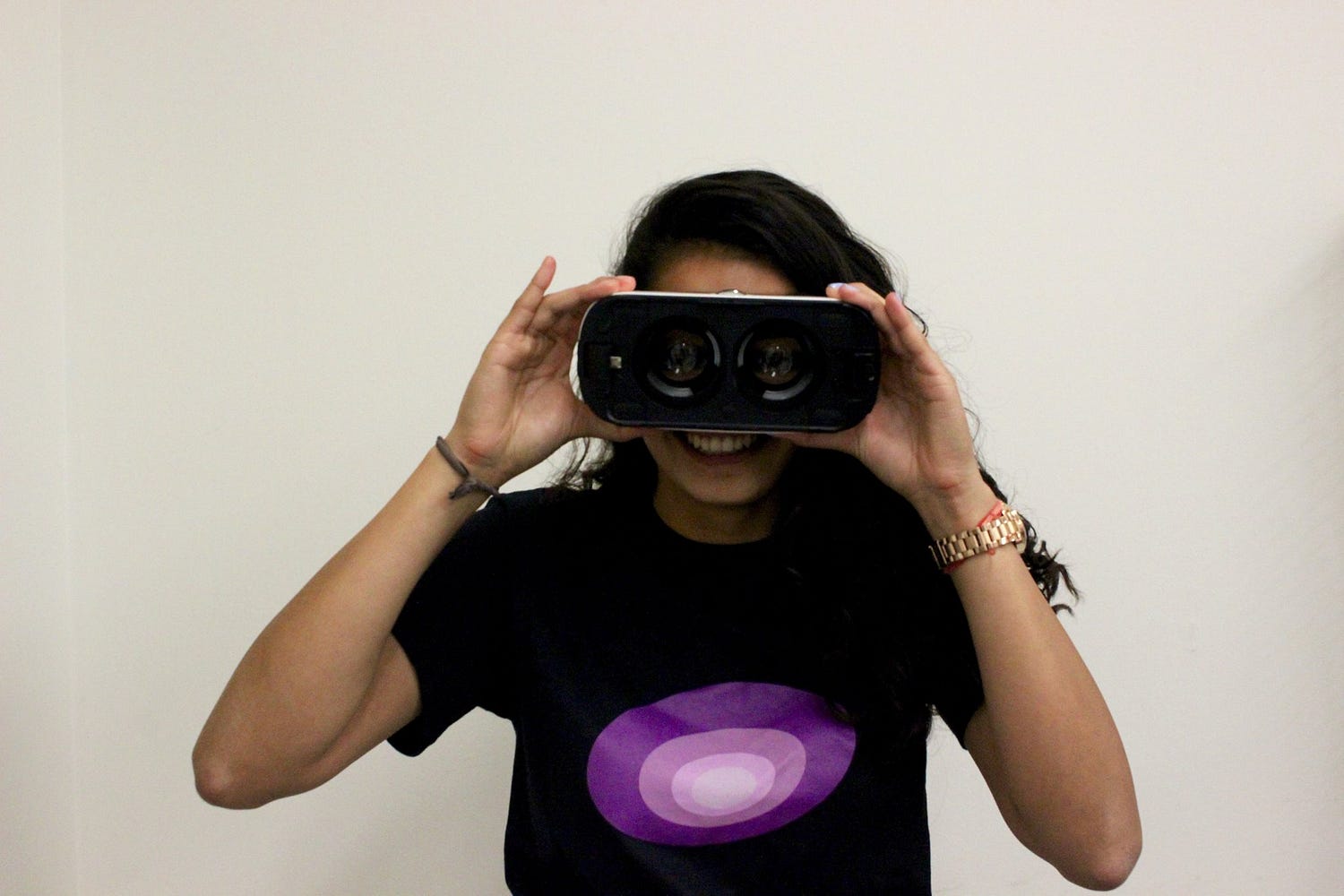
“I’m most excited about making VR accessible” said Mago “I think Cardboard and other cheap mobile headsets are doing an awesome job of democratizing consumption and I’m interested in exploring how VR content creation can be democratized. What happens when we give people the power to tell their own stories immersively?”
The power of VR to get new people taking advantage of cutting edge tech speaks strongly to Mago, especially because VR was very much her entry point into computer science & the tech world.
“I learned about VR in high school in the context of treating PTSD, and that was the first time that I realized that tech could help people. From that, I became determined to learn how to code and explore the possibilities in VR in areas like education, industrial design, and healthcare.”
Business Development Lead Sami Ramly, who managed the planning & execution of The Next Gen of VR event from start to end, is working with Mago to ensure Stanford is seen as a role model for VR organizations in the valley and beyond:
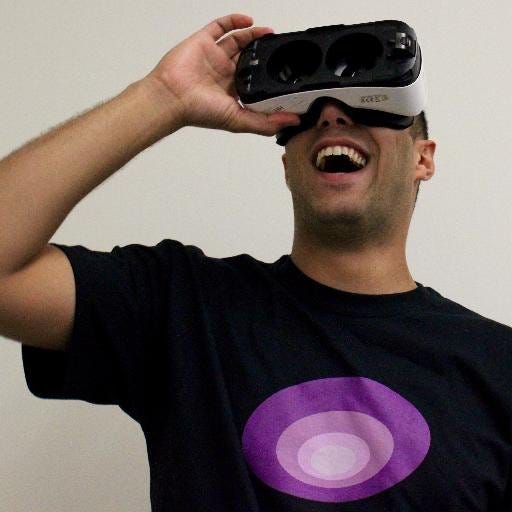
“Stanford has played a tremendous role in making Silicon Valley what it is today, but the Age of Silicon is now making way to the era of VR & AR. As money and talent keeps flocking to the Bay, it is now Stanford’s duty and legacy to lead the creation of the new ‘Virtual Valley’ on the shoulders of the Silicon one. This is where it will start exploding and this is how the VR/AR revolution will spread to every campus in the world.”
Ramly is currently working on a few VR/AR side projects. He’s built a social VR game on High Fidelity for the Vive and is building a HoloLens app for kids. Rather than focusing his energy on building side projects for mobile, he’s looking towards the future.
“The Stanford freshman dream is starting to look like this: get into college, learn how to code for iOS or Android, build a YikYak or Tinder copycat, drop out and start your own company. That’s all really good of course -I love mobile, don’t get me wrong!- but that’s such a limited view and it’s so “2000-and-late” in this VR/AR new world. Get a Google Cardboard, download Unity, join a VR/AR maker community like Rabbit Hole and start building the products of today and tomorrow — that’s how you really ‘change the world’.”
Democratizing VR/AR Panel
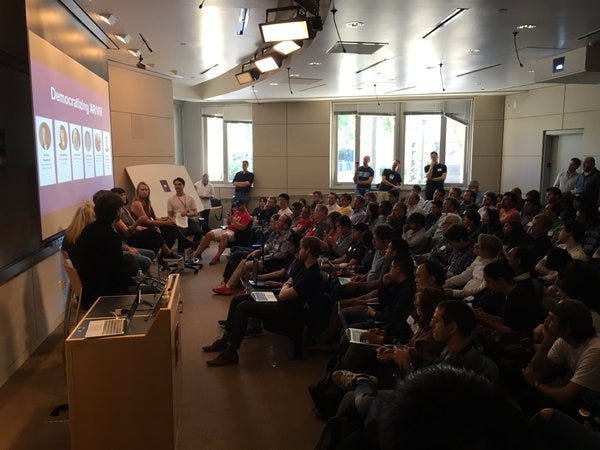
I was lucky enough to moderate one of the two incredible panel discussions of the day. The classroom style auditorium was overflowing, filled with a particularly curious group of humans. “Democratizing VR/AR” was the topic of discussion, and I sat with a rockstar panel of people much smarter than I am:
- Christian Plagemann, Director at Udacity and Co-founder of Google VR
- timoni west, Principal Designer at Unity Labs
- Daniella Segal Head of Experiences at Meta Co
- Jay Borenstein Facebook Education and VR/CS Professor at Stanford
- Jess Johnson, Senior Product Manager at Linden Lab’s Project Sansar
You can watch the full hour long discussion in 360 on youtube below.
In Conclusion
Rabbit Hole is in an unique position to make a major impact on the early VR industry. They’re not (necessarily) starting companies, so they can try crazy and innovative ideas with an exciting new technology. They are lucky to be at the start of this industry and to be students — not only do they have access to super talented people from very different backgrounds at Stanford, support from industry and tons of resources…they also have the freedom to think huge, experiment and take risks without the burden of
a) worrying about how to monetize and
b) worrying about having to succeed.
So are student-led organizations like Rabbit Hole increasing exposure and awareness in VR? Absolutely. But more importantly, they are inspiring the next generation of VR involvement.